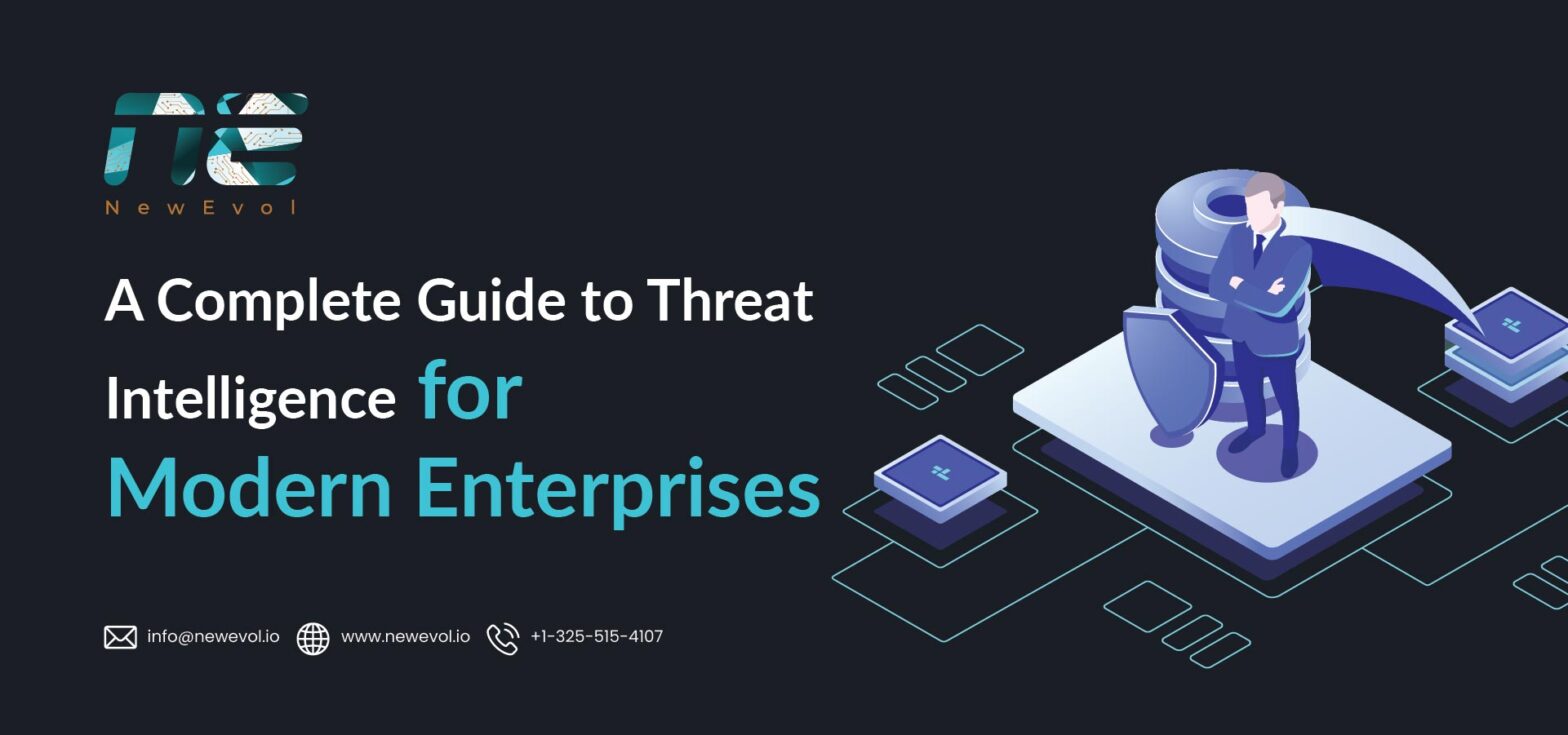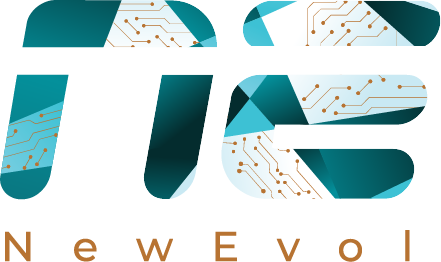A Complete Guide to Threat Intelligence for Modern Enterprises

Cyber attacks in Malaysia are no longer “if”—they’re “when.” From ransomware hitting critical infrastructure to phishing scams targeting banks and e-commerce businesses, Malaysian organizations are facing cyber threats that are faster, smarter, and more damaging than ever. In early 2025 alone, MyCERT reported thousands of incidents, with fraud, credential theft, and malware topping the list.
To stay ahead, modern enterprises need threat intelligence (TI)—a proactive approach to identifying, analyzing, and responding to cyber threats before they cause real damage. In this guide, we’ll show how Malaysian businesses can use threat intelligence to strengthen defenses, reduce risk, and make smarter security decisions in today’s fast-evolving cyber landscape.
What is Threat Intelligence?
Threat intelligence (TI) is the process of collecting, analyzing, and using information about cyber threats to make smarter security decisions. Unlike raw alerts or log data, TI turns scattered signals into actionable insights that help organizations predict, prevent, and respond to attacks.
TI comes in three main types:
- Tactical Threat Intelligence – Focused on the “how” of attacks. Examples: malware signatures, phishing URLs, malicious IP addresses. This helps SOC analysts respond quickly to specific threats.
- Operational Threat Intelligence – Focused on campaigns and threat actors. Example: tracking a cybercrime group targeting banks in Malaysia. This helps security teams understand attacker methods and prepare defenses.
- Strategic Threat Intelligence – Focused on the “why” and overall risk. Example: understanding trends in ransomware attacks on critical Malaysian infrastructure. This helps executives and CISOs make informed risk management decisions.
Why Threat Intelligence Matters for Malaysian Enterprises
For businesses in Malaysia, the cyber threat landscape is evolving rapidly. Threat intelligence helps organizations stay ahead by providing clear insights into potential attacks and the actors behind them. Here’s why it matters:
1. Faster Threat Detection and Response
TI allows security teams to detect threats early, reducing dwell time and limiting damage. For example, a Malaysian bank using TI can identify phishing campaigns targeting its customers before accounts are compromised.
2. Prioritization of Risks
Not all alerts are equally dangerous. TI helps SOCs focus on the threats that matter most, cutting down noise and improving efficiency. This is especially important for Malaysian SMEs with limited security staff.
3. Protection of Critical Infrastructure
Sectors like transportation, healthcare, and finance are prime targets. Airports, hospitals, and payment systems rely on TI to anticipate attacks and safeguard operations.
4. Enhanced Decision-Making for Executives
By providing strategic insights, TI enables CISOs and leadership teams to make informed cybersecurity investments and policy decisions, ensuring resources are spent where they’re needed most.
5. Regulatory Compliance Support
TI helps organizations stay compliant with Malaysian regulations, including PDPA breach notification requirements, by enabling faster detection and reporting of incidents.
Current Threat Landscape — Malaysia & APAC
Malaysian organizations are facing a rapidly evolving cyber threat landscape, with attacks growing in both sophistication and frequency. Some key trends include:
1. Ransomware Targeting Critical Infrastructure
Airports, transportation networks, and hospitals have seen increasing ransomware attempts. Disruptions can halt operations, damage reputation, and result in significant financial loss.
2. Phishing and Credential Theft
Phishing campaigns remain the top reported incident in Malaysia, targeting banks, e-commerce platforms, and government services. Stolen credentials often lead to fraud and unauthorized access to sensitive systems.
3. Business Email Compromise (BEC) and Fraud
Companies across Malaysia’s financial and commercial sectors are seeing a rise in sophisticated BEC scams, with attackers impersonating executives to authorize fraudulent transactions.
4. State-Sponsored and Organized Threat Actors
Asia-Pacific sees heightened activity from state-backed groups and organized cybercrime rings. Malaysian enterprises in finance, energy, and government sectors are prime targets.
5. IoT and Legacy System Vulnerabilities
Many Malaysian businesses are adopting IoT and connected devices without proper security, creating new entry points for attackers. Legacy infrastructure in healthcare and manufacturing adds further exposure.
6. Rapid Digital Transformation Risks
As organizations adopt cloud solutions, mobile apps, and remote working setups, new attack surfaces emerge, demanding real-time intelligence and proactive monitoring.
Where Threat Intelligence Comes From
Threat intelligence relies on multiple sources to provide a comprehensive view of potential threats. Understanding where TI comes from helps Malaysian enterprises choose the right tools and strategies. Key sources include:
1. Open Source Intelligence (OSINT)
- Publicly available data such as security blogs, vulnerability databases, social media, and news reports.
- Pros: Free or low-cost, broad coverage.
- Cons: Can be noisy, requires validation.
2. Commercial Threat Feeds
- Paid services that provide curated indicators of compromise (IOCs), malware signatures, and threat actor profiles.
- Pros: Reliable, timely, often includes analysis.
- Cons: Costly; may require integration with SIEM or SOAR.
3. Internal Telemetry
- Logs, alerts, and events from existing security systems like SIEMs, EDRs, firewalls, and network monitoring tools.
- Pros: Specific to your organization, high relevance.
- Cons: Limited without external context.
4. Partner and Community Sharing
- Information shared by industry groups, ISACs, or MSSPs. In Malaysia, organizations can participate in sector-specific sharing through MyCERT or local cybersecurity forums.
- Pros: Access to local insights and early warnings.
- Cons: Quality and timeliness can vary.
5. Dark Web Monitoring
- Detect compromised credentials, leaked data, and chatter about planned attacks.
- Pros: Early detection of threats targeting your organization.
- Cons: Requires expertise to interpret and act on findings.
How to Build a Practical Threat Intelligence Program
A structured threat intelligence program helps Malaysian enterprises move from reactive security to proactive defense. Here’s a step-by-step approach:
1. Define Objectives and Stakeholders
- Identify what you want to achieve: faster detection, reduced breaches, regulatory compliance.
- Engage key stakeholders: CISO, SOC team, IT ops, legal, and PR.
2. Identify Key Assets and Threat Models
- Determine your organization’s “crown jewels”: critical systems, sensitive data, and key processes.
- Map potential threats to these assets, considering industry-specific risks.
3. Select Sources and Feeds
- Choose a combination of OSINT, commercial feeds, internal telemetry, and partner sharing.
- Ensure coverage of local threats relevant to Malaysian enterprises.
4. Integrate with Security Tools
- Feed TI into SIEMs, SOAR platforms, EDRs, and ticketing systems for automated monitoring and response.
5. Develop Playbooks and Operational Processes
- Create standardized procedures for analyzing, triaging, and acting on threat intelligence.
- Include response steps for phishing, malware, ransomware, and suspicious activity.
6. Measure and Improve
- Track KPIs: mean time to detect/respond, reduction in false positives, and threat intel utilization.
- Regularly review processes, update feeds, and refine playbooks based on lessons learned.
Integrating Threat Intelligence with Existing Security Tools
Threat intelligence is most effective when it’s seamlessly connected to the tools your security team already uses. For Malaysian enterprises, integration ensures faster, smarter, and more automated responses. Key integration points include:
1. TI + SIEM (Security Information and Event Management)
- Enrich alerts with context from threat feeds (e.g., known malicious IPs or domains).
- Prioritize incidents based on verified threat intelligence, reducing noise for SOC analysts.
2. TI + SOAR (Security Orchestration, Automation, and Response)
- Automate workflows such as blocking IPs, quarantining endpoints, or sending alerts to analysts.
- Accelerates response and reduces manual effort, particularly useful for SMEs with small security teams.
3. TI + EDR (Endpoint Detection and Response)
- Apply threat intelligence to endpoints to detect malware, lateral movement, or unusual behavior early.
- Supports proactive threat hunting and containment.
4. Threat Hunting and Playbooks
- TI informs proactive hunting by highlighting indicators of compromise (IOCs) or emerging attack patterns.
- Analysts can create repeatable playbooks for common attack scenarios, such as phishing campaigns or ransomware infections.
5. Data Formats and Standards
- Ensure compatibility with industry-standard formats like STIX/TAXII or JSON feeds for smooth integration and sharing.
Threat Intelligence Use Cases — Malaysia Examples
Malaysian organizations can benefit from threat intelligence across multiple sectors. Here are some practical examples:
1. Protecting Critical Infrastructure
- Airports, public transport, and energy facilities face ransomware and sabotage attempts.
- TI helps identify threats early, monitor suspicious activity, and prevent service disruptions.
2. Financial Services: Detecting Fraud and Credential Theft
- Banks and fintech companies are common targets for phishing, BEC scams, and credential-stuffing attacks.
- TI allows SOCs to track emerging campaigns, block malicious actors, and alert customers proactively.
3. Healthcare: Defending Patient Data and Legacy Systems
- Hospitals and clinics often run legacy software that is vulnerable to ransomware and malware.
- TI helps prioritize high-risk vulnerabilities and detect attacks before sensitive patient data is exposed.
4. Small & Medium Enterprises (SMEs)
- Smaller organizations may not have dedicated SOCs.
- Managed TI services and focused threat feeds allow SMEs to monitor relevant threats without heavy investments.
Operational Playbooks — Short Examples
Operational playbooks translate threat intelligence into concrete actions, helping Malaysian enterprises respond efficiently to cyber threats. Here are two practical examples:
1. Phishing Campaign Response
- Detection: Threat intelligence identifies a phishing URL targeting employees.
- Enrichment: Analysts verify the URL against known malicious domains and threat feeds.
- Action: Block the URL at the firewall and email gateway, notify affected users, and trigger awareness campaigns.
- Follow-up: Monitor for repeated attempts and update security rules accordingly.
2. Ransomware Threat Mitigation
- Detection: TI highlights indicators of compromise (IOCs) associated with a ransomware strain active in the region.
- Hunting: SOC team scans endpoints for the IOCs and checks for lateral movement.
- Containment: Isolate infected devices, patch vulnerabilities, and enforce network segmentation.
- Recovery: Restore systems from secure backups and update incident response documentation.
These playbooks ensure that threat intelligence is actionable, repeatable, and tailored to the organization’s risk profile. They also help Malaysian enterprises reduce response times and limit potential damage from attacks.
Choosing a Threat Intelligence Provider / Platform
Selecting the right threat intelligence (TI) provider is crucial for Malaysian enterprises to ensure timely, relevant, and actionable insights. Consider the following factors:
1. Local and Regional Coverage
- Ensure the provider tracks threats relevant to Malaysia and the APAC region, including ransomware, phishing campaigns, and industry-specific attacks.
2. Feed Freshness and Reliability
- The value of TI depends on how up-to-date and accurate the data is. Look for providers with real-time or near-real-time updates.
3. Integration Capabilities
- Confirm that the platform can easily integrate with your existing tools—SIEM, SOAR, EDR, and ticketing systems. Support for formats like STIX/TAXII is ideal.
4. Scalability
- Choose a solution that grows with your organization, from SMEs to large enterprises, without sacrificing performance.
5. Analyst Support and Managed Services
- Some providers offer expert analysis, threat hunting, or managed TI services, which can be valuable for organizations with limited in-house resources.
6. Cost and Licensing Model
- Consider subscription fees, per-user costs, and whether the provider offers tiered services suitable for SMEs or large enterprises.
7. Questions to Ask Vendors
- How frequently are feeds updated?
- Does the platform provide contextual analysis or just raw IOCs?
- Are local regulations, like Malaysia’s PDPA, supported in breach detection and reporting?
Threat Intelligence for Small & Medium Enterprises (SMEs)
Small and medium enterprises in Malaysia often face the same cyber threats as large organizations but with limited resources. Threat intelligence can still be applied effectively with a practical, cost-conscious approach:
1. Prioritize Relevant Feeds
Focus on threat intelligence sources that directly impact your industry or region, such as phishing alerts for financial services or malware targeting SMEs.
2. Leverage Free OSINT Sources
Use publicly available resources like MyCERT advisories, threat blogs, vulnerability databases, and community forums.
3. Managed Services and MSSPs
Engage managed security service providers to access curated TI feeds, incident response support, and 24/7 monitoring without hiring full-time analysts.
4. Community Sharing and Local Partnerships
Participate in local cybersecurity communities or ISACs to exchange threat intelligence and learn from peers in Malaysia.
5. Simple Playbooks and Automation
Use straightforward playbooks to respond to common threats, and automate routine actions where possible to maximize efficiency.
Regulatory & Compliance — Malaysia Specifics
Threat intelligence not only strengthens cybersecurity defenses but also helps Malaysian enterprises meet regulatory and compliance requirements. Key points include:
1. Personal Data Protection Act (PDPA) Amendments
- The 2024 PDPA amendments require organizations to report data breaches promptly.
- TI helps detect potential breaches early, enabling timely notifications to regulators and affected individuals.
2. Breach Notification and Reporting
- MyCERT / Cyber999 is the official channel for reporting cyber incidents in Malaysia.
- Organizations can leverage TI to provide accurate information on the nature of attacks, IOCs, and impacted systems.
3. Supporting Governance and Risk Management
- TI enables companies to identify and mitigate risks proactively, aligning with internal governance policies and audit requirements.
- Helps executives demonstrate due diligence in protecting customer data and critical assets.
4. Sector-Specific Compliance
- Financial institutions, healthcare providers, and critical infrastructure operators often face additional regulations requiring continuous monitoring and incident reporting.
- Threat intelligence supports adherence to these standards by providing actionable insights for risk mitigation.
KPIs, Governance, and Continuous Improvement
A successful threat intelligence program is not static—it requires ongoing measurement, governance, and refinement. Malaysian enterprises can use the following approaches:
1. Key Performance Indicators (KPIs)
- Mean Time to Detect (MTTD): How quickly threats are identified.
- Mean Time to Respond (MTTR): How fast incidents are contained and remediated.
- Reduction in False Positives: Ensures SOC teams focus on real threats.
- Intel Utilization Rate: Tracks how often threat intelligence informs decisions and actions.
2. Governance Framework
- Assign ownership and accountability across stakeholders (CISO, SOC, IT ops).
- Ensure policies and procedures are regularly updated to reflect emerging threats.
- Align TI activities with business objectives and risk appetite.
3. Continuous Improvement
- Conduct regular reviews of threat feeds, playbooks, and incident outcomes.
- Run tabletop exercises and simulations to test response effectiveness.
- Incorporate lessons learned into updated TI strategies and operational playbooks.
Case Study — Malaysia Example
In early 2025, a major Malaysian airport faced a ransomware disruption that temporarily halted operations. While no sensitive passenger data was reported lost, the incident caused flight delays and operational chaos.
How Threat Intelligence Could Have Helped:
- Early Detection: TI feeds could have flagged the ransomware strain and associated indicators of compromise (IOCs) before infection.
- Automated Response: Integration with SIEM and SOAR platforms could have isolated affected systems immediately, preventing lateral movement.
- Threat Hunting: SOC analysts could have proactively searched for early signs of infection across the network.
- Strategic Insights: Executive leadership would have received actionable intelligence to make informed operational and communication decisions.
Common Pitfalls & How to Avoid Them
Even with threat intelligence in place, Malaysian enterprises can encounter challenges if implementation is not carefully managed. Common pitfalls include:
1. Too Many Feeds, Too Little Focus
- Collecting excessive threat feeds can overwhelm analysts.
- Solution: Prioritize feeds relevant to your industry and region, and focus on actionable intelligence.
2. Lack of Integration
- TI that isn’t connected to SIEM, SOAR, or EDR limits its usefulness.
- Solution: Ensure seamless integration so alerts can trigger automated responses and enrich SOC workflows.
3. Ignoring Quality Over Quantity
- Raw or unverified data can produce false positives and wasted effort.
- Solution: Validate sources and rely on curated, reliable feeds.
4. No Playbooks or Standardized Processes
- Without operational procedures, intelligence may not translate into action.
- Solution: Develop and maintain playbooks for common attack scenarios.
5. Neglecting Measurement and Review
- Programs without KPIs or regular reviews can become ineffective over time.
- Solution: Track MTTD, MTTR, false positives, and intel utilization, and update processes accordingly.
Conclusion
Threat intelligence is no longer optional—it’s essential for Malaysian enterprises facing a growing wave of cyber threats. By turning raw data into actionable insights, organizations can detect attacks early, prioritize risks, and protect critical assets.
Five Steps to Get Started:
- Assess Your Current Security Posture: Identify gaps in detection, monitoring, and response capabilities.
- Define Objectives and Key Assets: Focus on protecting what matters most to your business.
- Choose the Right TI Sources: Combine OSINT, commercial feeds, internal telemetry, and community sharing.
- Integrate TI with Existing Tools: Connect threat intelligence with SIEM, SOAR, and EDR for automated and enriched responses.
- Measure, Review, and Improve: Track KPIs, refine playbooks, and continuously enhance your TI program.
By following these steps, Malaysian enterprises—from SMEs to large organizations—can build a proactive, intelligence-driven cybersecurity strategy.
FAQs
1. What is threat intelligence (TI)?
Threat intelligence is actionable information about cyber threats that helps organizations detect, prevent, and respond to attacks quickly and effectively.
2. Why do Malaysian businesses need TI?
With rising ransomware, phishing, and fraud incidents in Malaysia, TI helps organizations stay ahead, prioritize risks, and protect critical assets.
3. What types of threat intelligence exist?
There are three main types: tactical (IOCs, malware signatures), operational (threat actor campaigns), and strategic (trends and risks for executive decision-making).
4. How can SMEs in Malaysia leverage TI?
SMEs can focus on relevant feeds, use free OSINT sources, adopt managed TI services, and implement simple playbooks to stay protected without heavy investment.
5. How does TI support compliance in Malaysia?
TI enables early breach detection, helping organizations meet PDPA breach notification requirements and adhere to sector-specific regulatory standards.
6. How do I choose the right TI provider?
Look for regional coverage, reliable feed updates, integration with existing tools, analyst support, and a cost model suitable for your organization.
7. Can TI prevent all cyberattacks?
No solution can stop every attack, but TI significantly reduces risk, improves detection and response times, and strengthens overall cybersecurity resilience.

